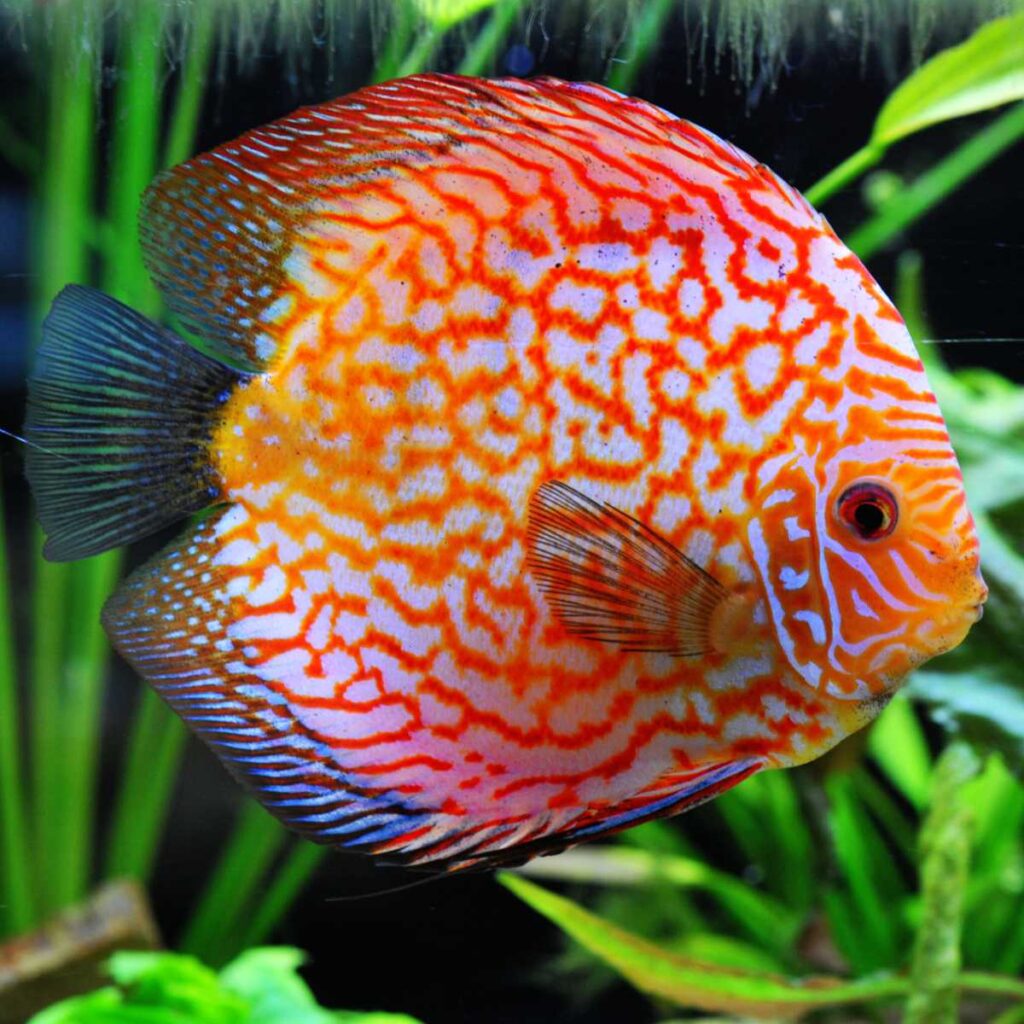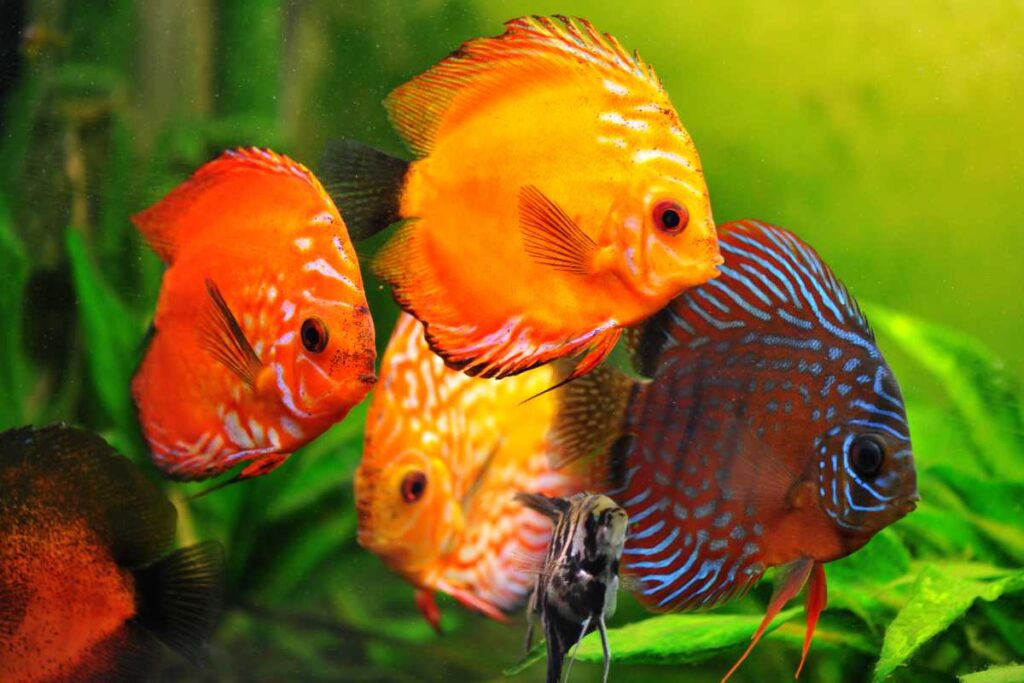Last Reviewed and Updated on February 21, 2023
Discus fish, also commonly called pompadour fish, is one of the most colorful freshwater fish. Learn some fun facts about discus fish, from their social behavior to their rather unique take on parenting.

About discus fish
Discus fish (Symphysodon) is a species of freshwater fish native to the Amazon River basin in South America belonging to the genus cichlids. They are popular aquarium fish.
There are three recognized species of discus fish;
- blue discus of brown discus (Symphysodon aequifasciatus)
- red discus or Heckel discus (Symphysodon discus)
- green discus (Symphysodon tarzoo)
These fish have round, laterally compressed body shape that is typically 4.8 to 6.0 in 12.3 to 15.2 cm in length but can grow larger in captivity.
Discus fish primarily feed on algae and plant material and eat organic matter, but they will also eat small invertebrates.
They are egg-laying fish.
Interesting facts about discus fish
Ready for some fun facts about discus fish? Read on!
Also, check our list of unique facts about fish or our list of weirdest facts about animals in general.

1. Discus fish are very social
Discus fish are very social animals and thrive in groups. In their natural habitat, discus fish form large schools and swim together in search of food and safety.
In an aquarium setting, discus fish should be kept in groups of at least six individuals to promote their social and interactive behavior. Keeping discus fish in pairs or small numbers may lead the fish to become stressed and develop health issues.
2. When breeding, the pair moves away from the group
While these fish do love larger groups, when it comes to mating, the breeding pair will move away from the group. They will spawn away from the group; this prevents other discus fish from eating their eggs and their young.
3. Discus fish feed their young
Discus fish exhibit a behavior that isn’t often seen in other fish. They look after and feed their young. Parent discus fish secrete a special mucus on their skin which the larvae feed upon. The young get much more than just the required nutrients from their parents; research suggests that fry that feeds on the mucus from their parents develop faster and more successfully than fry that doesn’t feed on it (Costs and benefits of biparental mucus provisioning in discus fish by S. Satoh, H. Tanoue, M. Mohri).
4. In the wild, they live in blackwater habitats
A blackwater habitat is a type of water ecosystem characterized by slow-moving, usually dark but clear water. The water is dark stained, resembling black tea, due to dissolved organic matter, usually from the decay of plant material. Not all dark water is blackwater, though; the key is that the color comes from organic matter and not from the color of the soil.
5. They are known as the “King of the Aquarium”
Just one look at their majestic colors and how they move in the aquarium are enough reasons why these freshwater fish are nicknamed the “kind of the Aquarium.” And you do need to take care of them like they are royalty if you want to keep them.
6. Males and females are almost the same
There is virtually no sexual dimorphism in discus fish. Both males and females have the same coloration and body shape. The only difference is that males can be, but aren’t always, larger than females.
7. They live for over 10 years
In aquariums, they typically have a lifespan of about 10 years but can live over 15 years too.
8. Unsurprisingly, discus fish got their name from their shape
They got their common name, the discus fish, because of the round shape of their body.
9. It was introduced as aquarium fish in the 1930s
And it has become more and more popular with each decade.
10. It is one of the most demanding aquarium fish
Although they are popular freshwater aquarium fish, they are also one of the most demanding to take care of.
11. First discus fish was described by Dr. J. J. Heckel in 1840
Dr. J. J. Heckel described the first species of discus fish, Symphysodon discus, the red discus, or Heckel discus, in 1840.
12. There are three species of discus fish and dozens of color morphs
In nature, there are three recognized species of discus fish. As this fish became popular in the aquarium trade, selective breeding resulted in various morphs exhibiting wonderful colors and patterns.
